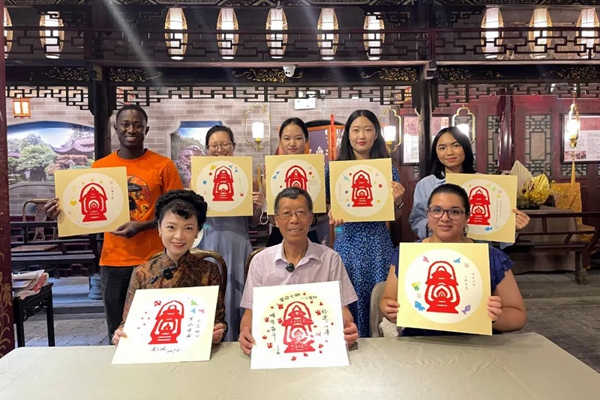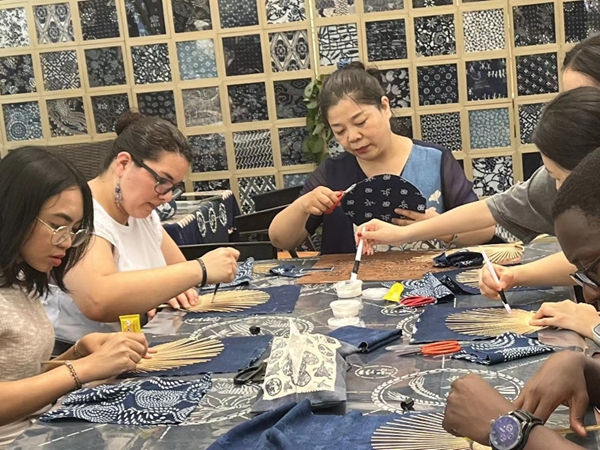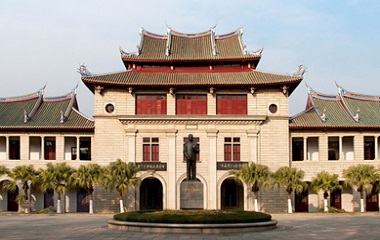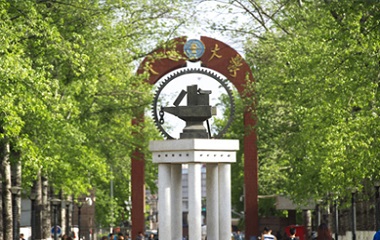
Eight Shanghai University students from China, South Korea, Thailand, Mexico and Senegal experienced the charm of Chinese intangible cultural heritages (ICHs) during a two-week summer program.
They explored the inheritance and innovation of Shanghai ICHs and experienced ICH skills under the guidance of ICH inheritors through field trips to cultural venues in Shanghai, learned about the history of ICH in China and Shanghai through cultural lectures, and got insights into the changes of Chinese ICHs over the past 10 years from the perspective of ICH inheritors.
The students visited the Shanghai Anting Yaoban Cloth Innovation and Inheritance Base to learn about Anting Yaoban Cloth, an ICH which is the product of traditional Chinese dyeing, which originated in Jiading town during the Song Dynasty (960-1279).
At the base, they got the opportunity to see various Yaoban clothes and production tools and met with Liu Yucheng, a new-generation practitioner of Anting Yaoban Cloth. Liu introduced the history of the ever-evolving Yaoban Cloth patterns and demonstrated how to make clothes. Under the guidance of Liu, students tried their hands at making Yaoban Cloth circular fans.
They also gained a deeper understanding of Chinese tea culture at the Yu Garden, visited rich cultural collections at the Shanghai History Museum, experienced local folk culture at the Changning Folk Culture Center, and tried their hands at Sanlin porcelain carving in Sanlin Ancient Town.
In addition to the on-site visits, various online lectures were also a highlight of the program. Fang Yun, a doctor of folklore, introduced the basic knowledge of an ICH, the practice of ICH protection in China, and the background of ICHs in Shanghai to the students. Professor Pan Shouyong from Shanghai University gave a lecture on the protection of Chinese ICHs and the development of ICH museums to the students via a video link. Professor Zhang Lan, the former curator of the Shanghai History Museum, gave a review of the historical developments in Shanghai.












